Leaderboard
Popular Content
Showing content with the highest reputation on 08/01/2025 in all areas
-
got curious so started making a list Only 4 Fighters have 10 more Lumpinee and/or Rajadamnern Stadium belts and defenses... Chamuekpet 9+3 Kongtoranee 5+7 Jongrak (Lukprabaht/Kaiadisorn) 3+8 Wichannoi 3+7 and only a few more with 6 or more: Paruhatlek 5+4 Robert 3+6 Petchboonchu 6+3 Sam-A 3+6 Namsaknoi 3+5 Saenchai 6+2 Thongchai 5+3 Saenklai 2+6 Lamnammoon 4+3 Apidej 4+3 Den Srisothon 5+2 Anuwat 5+2 Nong-O 4+3 Mufuang 2+4 Singdam 4+2 Samart 4+2 Nongkai 2+4 Sagat 4+2 Namkabuan 1+5 Sagetdao 4+2 Lev helped me with the compilation. Everything pre-COVID (when things changed), probably incomplete1 point
-
a short piece I wrote in my hand-written diary The art of running in Muay Thai is mostly misunderstood. The probably child of military training, first of the influence of the British in the early 20th century and then from the United States in the mid-century, as it filtered through the Civil Service education, the standing armed forces and then the Police, the development of the long-running Thai fighter likely is akin to the combat solider on the march. Historically, Siamese warfare indeed involved long marches, often followed by siege. But this would not explain its persistent form as it relates to the 5 round ring. As military and police practices cycled through the provinces - brought home after and between service - and men trained and fighting in Bangkok rings in both Muay Thai and prevalent sponsored Western Boxing, the Long Run likely came to pervade the Muay Thai form throughout Thailand. But this regime of training came to match something more important and inimitable to Thailand's fighting art, and that is the long wave of attack. Perhaps this length-of-wave comes from Siam's own full martial history where engagement were pronounced and lengthy, or it comes from Thailand's Buddhistic core which prescribes equanimity in all things, and active encirclement of punctuated affects of every kind. In a sport of violence the Buddhistic prescription expresses itself vitally, flattening peaks and valleys. This is to say that in the art of 5 round ring fights the long run, likely of military and field training, also drew upon the very fabric of Buddhist culture as it played out pragmatically in more than a century of ring experiments. What many mistake when questioning the optimality of long running, is that first and foremost it is not a physical conditioning. Yes, it creates a firm foundation upon which explosive training may rest, an anchorage of recovery which can be vital in fights - the recovery of wind. But it is foremost a training of energy management, lengthening the wave, and the Mind, in particular to an engagement which most pointedly steers toward escalatory peaks and their troughs. It is about extending the Mind (and the energy) in the love wave, the wave that ultimately beats punctuated forms, breaking them down.1 point
-
I also didn't realize how much of Yodsanklai's career, his fame, came from fighting at those much larger weight classes vs farang, and of course Contender. He really is one of those strong Thais that in the stadia had mixed success at the highest stadia level, but then grew into the world of international fighters where he established an immense reputation.1 point
-
Ran into this fight researching Lakhin for the upcoming MTL session. Somehow I didn't realize he had an entire boxing career after his Golden Age run at FOTY (parallel somewhat to how Muay Thai Samson his nemesis went into pro boxing), and THEN came back to Muay Thai and fought top guys, even giving up weight. I'm impressed. In 2005 Yodsanklai wins the 147 lb Lumpinee belt, Lakhin would box again at 126 lbs. Lakhin finished his boxing career at 27-0-2 with 18 KOs. Lakhin had an extraordinary fight path, nearly winning a Golden Age FOTY in 1992 (probably missing out by losing the Samson Isaan trilogy that year). A very small bodied Muay Maat, its kind of amazing that he came back giving up weight in Muay Thai in his 30s, and even winning a WMC title vs Jaroenchai Kesagym (2005). It's a great, illustrative fight on a classic Southpaw counter to a Muay Maat orthodox aggressor. Yodsanklai isn't throwing his big left kick as we would do so much in later years, but his knees are beautiful on the opens side, submarining the pocket, and the fight essentially comes down to Lakhin just being very tough and refusing to stop with the hooks and the body crosses, just trusting that they will eventually break through Yodsanklai's interference, and Lakhin definitely has his moments in the fight where it looks like he's going to get that ball rolling, a few landed punches ring Yodsanklai. Gamblers are cheering every punch at one point, but it just isn't enough. The cagey, small, heavy handed veteran vs the young rising star who would have a big future Internationally, fighting farang at higher weight classes.1 point
-
It was just a perfect storm of a very deep talent pool, in the provinces, a huge economic boom in Bangkok with lots of money to invest, and the provincial (boxing educated) workers flowing into the city. The influx of workers was likely a significant factor. It created a hungry, educated and impassioned fan base. writing about Dieselnoi and Samart The so-called Golden Age of Muay Thai in the late 1980s and 1990s was driven by the economic boom of those years. Not only was there heaps of money to invest in gyms and fighters, flowing to enlarged fighter pay and sidebets, but it was the provincial man, the workers, who swarmed to Bangkok to find employment in the suddenly burgeoning, cosmopolitan economy. It was they that filled the stands with their wages in their hands, betting them. It was they who bought the newspapers and magazines. You have to add in things like the particular brilliance of the promoter OneSongChai who was expert at staging drama, pitting particular styles against other styles, and nurturing the talent of fighters without owning a gym himself. Another hidden factor could be that the influence of Western Boxing on Thailand may have also been its peak (there were boxing fights on each and every card, both at Rajadamern and Lumpinee, 9 cards a week - that's almost 500 boxing fights a year at the National Stadia). The mix with Western boxing may have even further expanded the fight skills of the talent pool. Amateur boxing was a very big deal in Thailand, especially after the King built provincial stadia across Thailand in 1979. These hubs of stadia likely anchored provincial fighting. Also, just structurally, the Muay Thai of then was not dominated by only a handful of gyms that simply bought talent up, as it is today. There was greater variety of BKK gyms, drawing from many more gyms in the ecosystem of the provinces. Even to get to Bangkok, it is said, required a great number of fights and proven skill. There was also great regional pride, and identity in the growth of fighters. Karuhat told us that every fight he had in Bangkok, when he was good, would pull 4 bus loads of fans from Khon Kaen in Isaan (his home town). This deep regionalism just doesn't exist in the same way now. The 1980s/1990s was a period of growing National connectivity, in the context of still powerful regional identities, expressed through the fight scene. The above is from a Reddit comment I made a few years ago. It seemed best to anchor it in my sub forum somewhere so as to not get lost as its a pretty decent, short summation. A few things that changed TLTR The economic boom in Thailand ended in 1995. In the 2000s there was also a rule change allowing sweeps and trips that were illegal in the Golden Age. This ended up radically altering the clinch fighting & grappling that arguably fueled much of the the complexity of Golden Age fighting styles. Boxing gradually started losing its influence on Muay Thai, until today there is next to none. Along with socio-economic, demographic shifts (changing the talent pool and the fan base) pedagogy & training methods seem to have also gradually changed as well, eventually accelerating the decline.1 point
-
If I was answering this question today I think I'd expand the picture of Western Boxing's lasting influence, coming up through the decades, intensifying from the 1960s on, the Army and Police Boxing leagues and I'd also write about how television was just starting to Nationalize Thai consciousness, and the built out local television networks in the Provinces, local stadium hubs, the published rankings from the provinces and the wide-scale small kaimuay ecosystem (which has been almost completely eroded) which developed so many fighters for the stadia. Here you can see how deep the provincial rankings went in published Golden Age Muay Thai magazines, layers of talent outside of the Capital (originally posted to Reddit Here are some Golden Age related Muay Thai economics, as well:1 point
-
Yodkhunpon visits PK Saenchai every Thursday, so you could be connected to him there, but I suspect the work you could do with him is much more thorough in private sessions in Pattaya, where he lives. Clinch is gyms is very hard to assess, because opportunity can depend on what size you are. If you are large bodied probably clinching with other Westerners would be what you require (but you'll not be training as much against skilled Thais, who know the art at a deeper level, which is important because a lot of clinch learning is through osmosis). We haven't been up to the (new) Lanna yet, but it does seem fighter-centric.1 point
-
Watched some Ronnachai, who in the past was an incredibly boring, very passive fighter who really liked to play on the ropes with small leads. His recent stint at RWS may have brought out some of the more aggressive sides of his personality, balancing his trad style out some? (a rare instance of Entertainment fighting complexifying a top trad fighter?). This fight vs Yothin a couple of years back really shows that old, passive style. There are almost no points scored in the fight and Yothin wins it in the 4th with a big rip from lock, I believe evening up there record against each other. Here is Ronnachai at his most aggressive in RWS, uncharacteristically chasing a KO against a smaller, less experienced opponent: Yesterday versus View, known for his hands, he won all the hands exchanges, and was willing to engage there. Maybe they are related?1 point
-
It's hard to assess these things because Muay Thai is so fragmented, but I think Ronachai may be the best Muay Thai fighter in Thailand.1 point
-
Watched this fight today. Kongtoranee with a valiant effort attempting to solve very similar spatial problems that Wichannoi struggled with for much of his fighting-up career, as a short armed, hands heavy fighter. And using the low kick and body shots in similar ways to chop into the pocket bubble, before he really has to fight in there. Petchdam just too big, his knees under punches just to massive. But same calculus. you can see my Wichannoi notes:1 point
-
The TAT in Thailand put forth its huge marketing strategy for tourism investment, detailing a budget of about $140,000,000 USD, but notably Muay Thai is almost entirely absent of mention (other than the large scale Wai Kru Ceremony which I believe is aligned with the Amazing Muay Thai campaign. read it here: https://www.tatnews.org/2025/07/thailand-launches-the-new-thailand-vision-to-redefine-tourism-in-2026/ Most notably is ONE's absence, especially in the list of the kinds of international sport events that its trying to be included in, "...marquee events such as the Amazing Thailand Marathon 2025, the 33rd SEA Games, and Honda LPGA Thailand will reinforce Thailand’s status as a premier sport tourism hub" A lot of ONE's argument has been how it is radically separated itself out from Thailand's Muay Thai, as part of a larger internationalist sport and martial art entity, in a way that traditional stadium Muay Thai is not. Instead it seems that the overall strategy of the TAT - which I was pretty impressed with, especially went it got down into the segmentations in the lower half of the article - has turned against the very exaggerative metrics that ONE likes to generate and turn to. It wants more meaningful tourism experiences, culturally and locally defined, anchors of attachment, not pushing big numbers which can vacillate and change at the drop of a hat or an investment rate. This is one of the problems with chasing the algorithm and turning traditional Muay Thai into a digital content (knockout) machine. You just become another piece of entertainment whose attention can slosh towards you or radically away from you. The TAT seems to see these and has turned against just number chasing. The kinds of values being put forth actually seem to mirror some of traditional Muay Thai's greatest strengths, the way it is culturally bound, locally defined and experienced, sewing itself into the very fabric and geography of the country. While Rajadamnern's efforts at Entertainment transformation also are not included, it and traditional Muay Thai in general, seems much better positioned to enter into the kinds of expenditures and themes the TAT is taking on. Thailand wants meaningful experiences, cultural attachment and identity, uniqueness, impassioned connection (not social media arguments and memes), it wants travelers who will return and return, who will spend lengthy time, this is traditional Muay Thai, and the Muay Thai of Kaimuay Culture.1 point
-
In all this time, I never realized that Muangchai's WBC Championship belt was the belt that Chatchai Sasakul won, passed through Yuri. Basically Chatchai resumed the Thai Champion legacy. The more you study, the more you see how embedded Western Boxing has been in Thailand's Muay Thai history. Filmed with Muangchai yesterday, documenting his Muay Thai.1 point
-
One thing that Sylvie noted is that very likely the smart phone has undermined even the most common Thailand gym culture. Trainers, fighters, everyone just does their work and then goes on their phones. The very communal aspect of trainers hanging out and watching the fighters do work, making judgements, correcting or commenting softly, talking with each other has become largely fragmented. The mutuality of knowledge and fighter development, even in trad settings, is quickly eroding. And in commercial spaces it may be entirely gone.1 point
-
Dieselnoi told us once, "It's how you end up". When discussing the careers of legacies of fighters its much like the traditional narrative structure of Muay Thai fights. Early leads mean next to nothing, but as your legacy unfolds in the culture over the decades its exactly like 4th and 5th rounds. Dieselnoi was one of the most remarkable prodigies, between the ages 14 and 16 he rode into the Bangkok national stadia with a probably unpresidented 20 fight win streak, until he ran into the buzzsaw of the legend Wichannoi...twice, until overcoming it, and reaching the status of the unfightable fighter, retiring just shy of his 24th birthday. An incredible meteoric rise, peaking perhaps in his victory on Christmas Eve of 1982, beating the since-coming-into-consensus GOAT, and good friend Samart Payakaroon. When we think of the greats, and their legacies, we need to realize that many of them see themselves in this way, as a narrative fight, it matters how you end up. This is one reason, in fact our friendship with Dieselinoi, who we experienced at first as somewhat only as legend, a myth when we met him, but not so much a man, living a life, and came to know him as the man who loved Muay Thai perhaps more than any person I history, with all of his might, a volcano of love, that we've sought to preserve, uncover, raise up, document the extraordinary careers, accomplishments, arts of the soul in the ring that were forged in a time of the sport that no longer is. These men are fighting still in their hearts. All of them. As much as we push for progress in the sport, and international love and acclaim, we not only owe it to great fighters of the past for them to finish well, finish strong in the eyes of the people, but its also to the betterment of everyone fighting and consuming the sport today, that it have legs, that it has myths, that it has roots that feel unshakeable...because they are. These are roots that we have to preserve and nourish, and spent work delineating, tracing how they grew and how they today anchor the trunk of all that grows today.1 point
-
"People think who you work with doesn't matter, if you just do the work. Utter bullshit. You absorb the qualities of who and what you work with." Proven again.1 point
-
1 point
-
The cover is above, you can download the full magazine in hi-res pdf: Muay Magazine - Nov. 8, 1968 ? - pdf download here Not sure about the year, inside there are cards posted from the year 1968 it seems. These magazines were sent to us by a supporting collector so we can share with others. Any informative comment or translation below is much appreciated.1 point
-
1 point
-
1 point
-
Lev brought to my attention Lankrung Kiatkriangkrai, who happens to be on the Holy Grail card, Christmas Eve of 1982, when Dieselnoi beat Samart. He's fighting Boonam Sor.Jarunee for the vacant 112 lb Rajadamnern title, and displays just a beautiful increasingly tempo'd style showing how boxing and the weapons of Muay Thai went together in early Golden Age. You can watch the fight below. He was a 1984 Olympic Boxer under the name Teeraporn Saengano. The good people of Muay Thai wikipedia, including Lev, have filled out his wikipedia page to give more anchorage of his fighting in history, a hugely important step in preserving the legacy of Muay Thai in Thailand. Without records we just have stories. You can find his wikipedia page here. This is some of his record context for the fight: Klaew Tanakul the promoter was a very big supporter of amateur Thai boxing, often financially lifting fighters up out of his own pocket, so its of no surprised that one of the best amateur boxers who was also a top Muay Thai fighter was featured on his promoted card. Video timestamped to about 25 minutes in if anything goes wrong. The fight starts very slow, but watch for his gradual uptempoing, his use of the jab, as he closes the distance round by round.1 point
-
1 point
-
The way the power is generated, the relationship of the shin to the arc, the point of the knee in sympathy to the overall movement, the hip drive. I've been meaning to write a short entry on Kerner and the Golden Age knees of the Hapalang gym. As we've documented in the Muay Thai Library project, and in our conversations in doing that documentation, Thailand today has pretty much LOST the Hapalang knee technique. The greatest Muay Khao gym in the history of Thailand featuring 3 absolute legends of the Knee Dieselnoi, Chamuakpet and Panomtuanlek, had an expertise of kneeing that has largely gone extinct. I've mentioned it several times, watching Dieselnoi knee Kru Gai with his belly pad on, at the age of near 60 then, and blasting the pad so hard it actually stunned Kru Gai, an experienced stadium fighter kru. They were like shotgun blasts. The legends of the Golden Age and other fighters of that age have told us that today Thais knee without damage, they knee largely to score, or set up another knee, which is fine, but they have largely lost the power and precision of the Hapalang knee (and likely of many other less famous gyms of the Silver Age and Golden Age era). It's very cool that we have documented these techniques for coming generations, but the video above is also a wonderful piece of history. The French fighter Guillaume Kerner, whose original Thai teacher was the legendary Pudpadnoi, spent a year at Hapalang gym in 1985 when he was 17 years old. Dieselnoi was already retired and a said (pi) trainer, but Chamuakpet and Panomtuanlek were there ascending, peaking into their FOTY performances. He was in the middle of the greatest Muay Khao space in Thailand, right in the heart of the Golden Age, and if you watch his highlights above it shows. No farang I've ever seen knees like Kerner because he was tapped into the source, and Thais today really don't knee how he did, because so far removed from the training conditions and pedagogy that develops this kind of technique. And, his case is a beautiful one because sometimes in "convert" coming to a technique can kind of over-sharpen it, which causes aspects of it to become even more clear, and I think that's the case with Kerner's kneeing. I assume his foundations were developed with Pudpadnoi, but the art of the power, sharpness and freedom of the knee in space bears the Hapalang mark. He also trained at other notable gyms in the Golden Age, (read up on his bio here) for us like a time traveler deposited where we imagined no farang were. As someone who has studied the knee styles of the 3 Hapalang legends, and other kneeing techniques of Thailand, and watched Sylvie develop her own versions of these, in her journey as a prolific, undersized Muay Khao fighter, its actually quite beautiful to see this video. Each time I watch it I'm amazed at how much of Hapalang got transferred to him, the traces and arcs and ethic of kneeing that even Thailand today no longer really has. You can study the Hapalang 3 legends in the MTL here: Dieselnoi (1982): #48 Dieselnoi Chor. Thanasukarn - Jam Session (80 min) watch it here AND #30 Dieselnoi Chor Thanasukarn 2 - Muay Khao Craft (42 min) watch it here AND #3 Dieselnoi Chor Thanasukarn - The King of Knees (54 min) - watch it here #76 Dieselnoi Chor Thanasukarn 4 - How to Fight Tall (69 min) watch it here Chamuakphet (1985): #49 Chamuakpet Hapalang - Devastating Knee in Combination (66 min) watch it here #81 Chamuakpet Hapalang 2 - Muay Khao Internal Attacks (65 min) watch it here Panomtuanlek (1986): #131 Panomtuanlek Hapalang - The Secret of Tidal Knees (100 min) watch it here Of course there still remain in Thailand many beautiful knee styles, many of them quite effective in their own right, there have been legends and great fighters who have carried the art of the knee fighter on. But, as knee fighting has been downgraded in the sport, and in some versions outright suppressed, there is reason to fear that even more branches of the rich pedagogic tree of knowledge will be severed, as legends and great krus start to age out.1 point
-
Sylvie politely and obliquely pointing out how insane the brutal knockout bonus is, with illustration of one of the great fighters of Thailand's past:1 point
-
Note to self...want to write of the female fighter as axis mundi, the christological (in Simone Weil sense of bridging sacrifice) pinning of the body down the in the turpitude of struggle, eliciting the sparks of the divine. Soliciting the female as artist, who builds the ladder to Heaven of oneself. see Possession (1981). What do I mean by this? Some of it is in relationship to my overall theory of ring fighting in Thailand as a rite, and I think my short film was tapping into this intuition:1 point
-
If you love clinch watch rounds 3-5 of Petchboonchu vs Yodwicha. It's three rounds of glory. It's amazing that in 10 short years this kind of performance and even fighting has been removed from the sport. Pure human art.1 point
Footer title
This content can be configured within your theme settings in your ACP. You can add any HTML including images, paragraphs and lists.
Footer title
This content can be configured within your theme settings in your ACP. You can add any HTML including images, paragraphs and lists.
Footer title
This content can be configured within your theme settings in your ACP. You can add any HTML including images, paragraphs and lists.
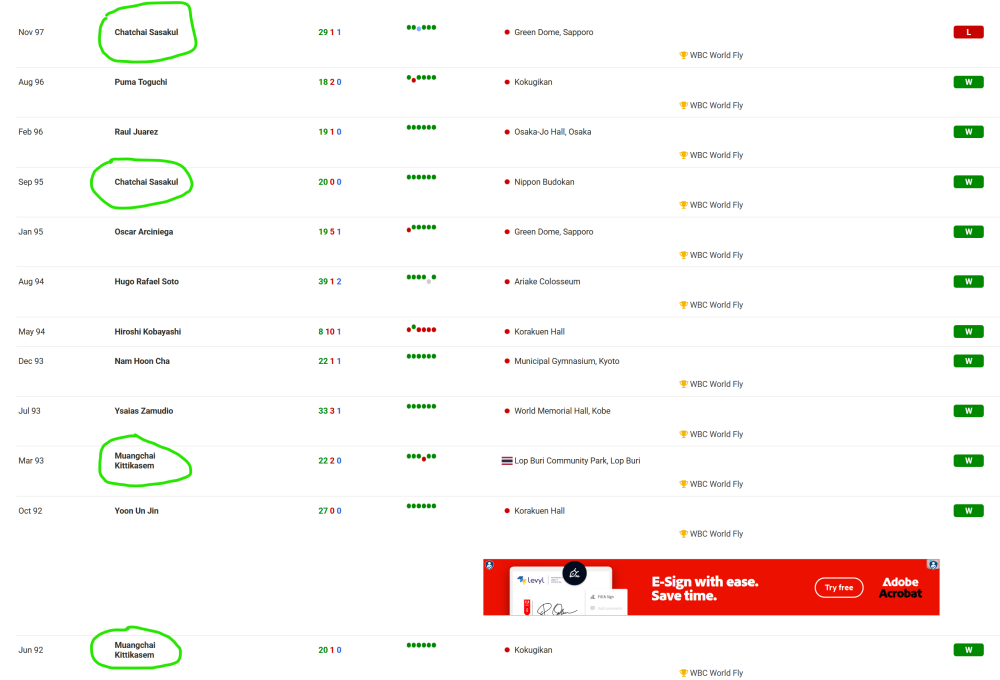
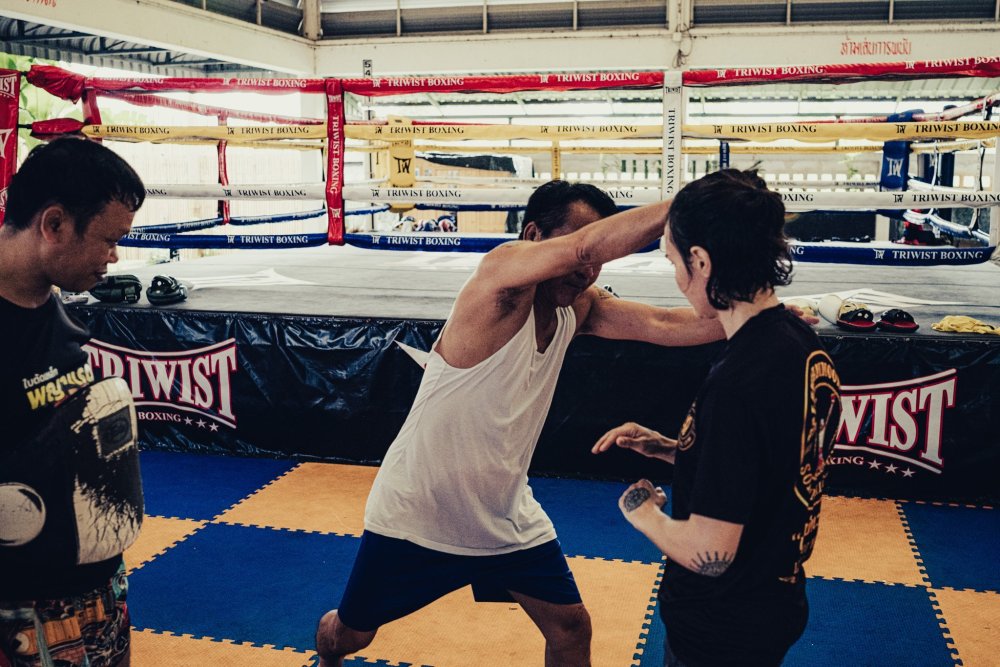
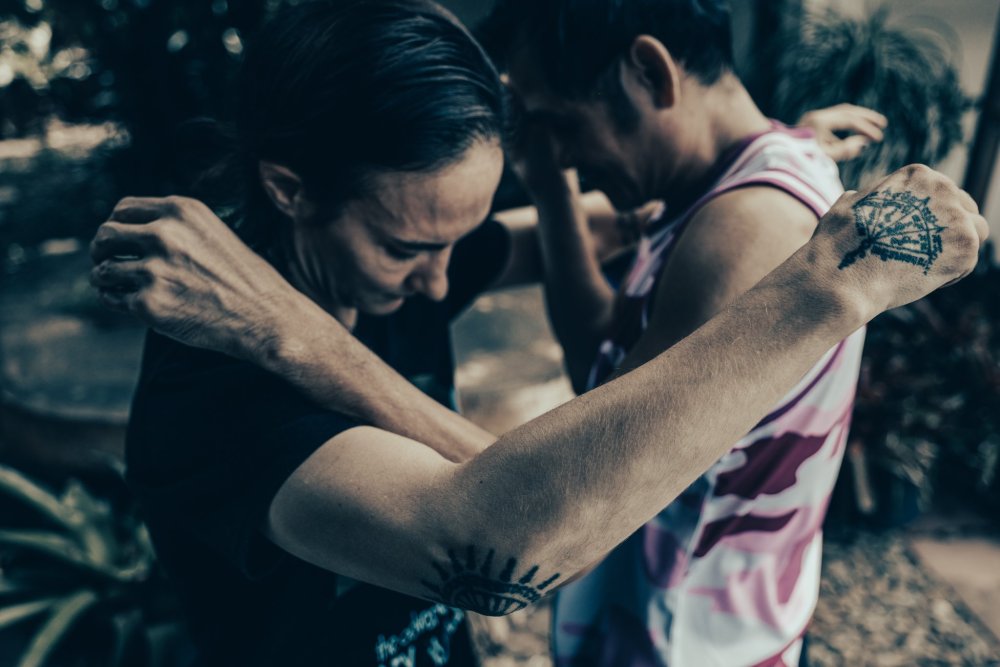
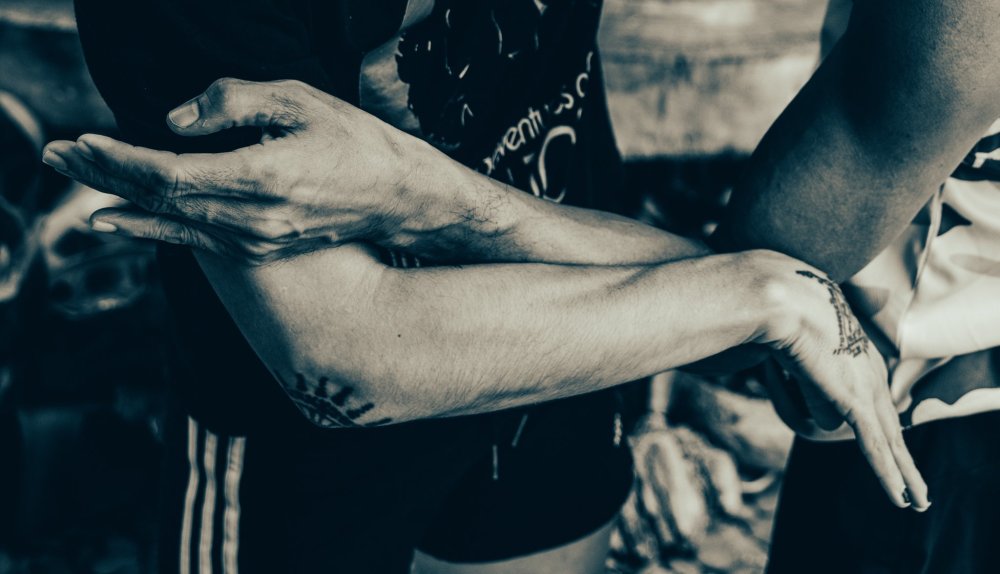
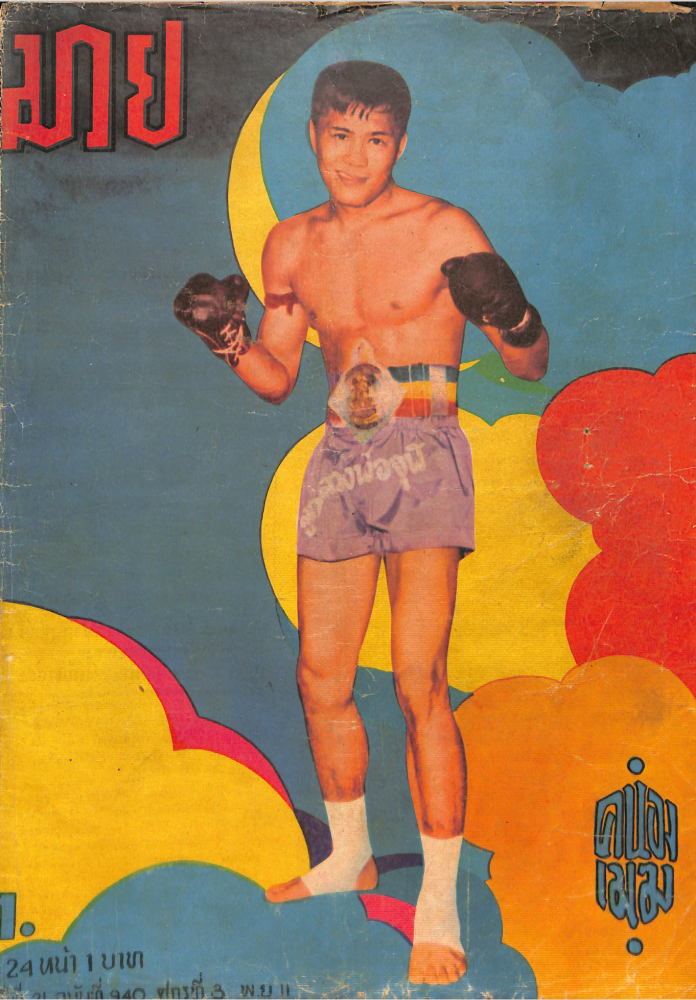
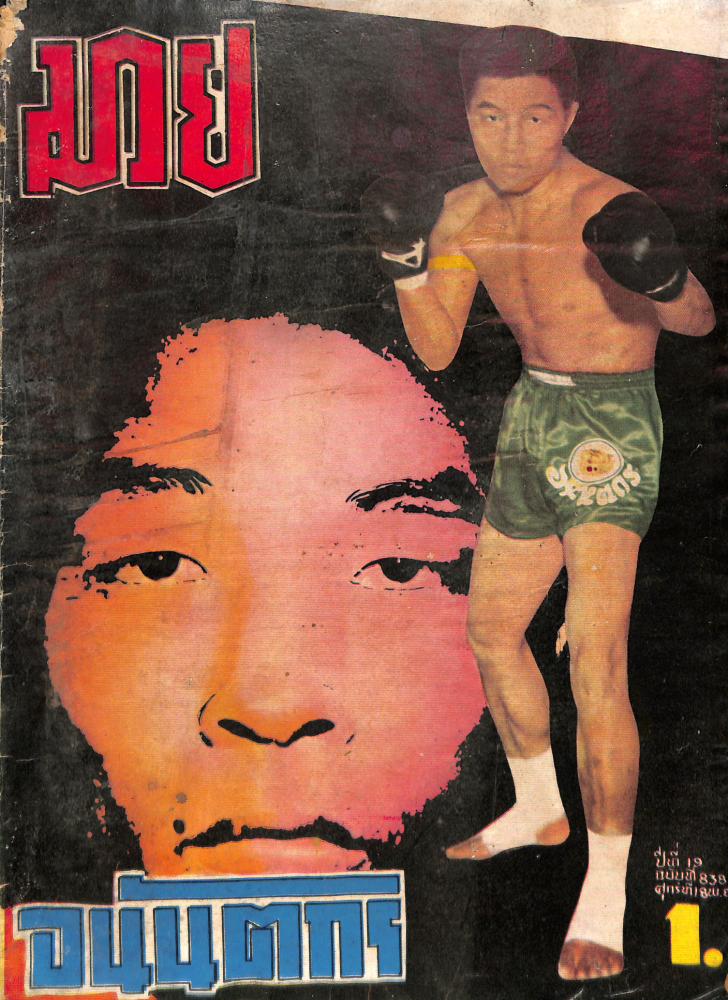
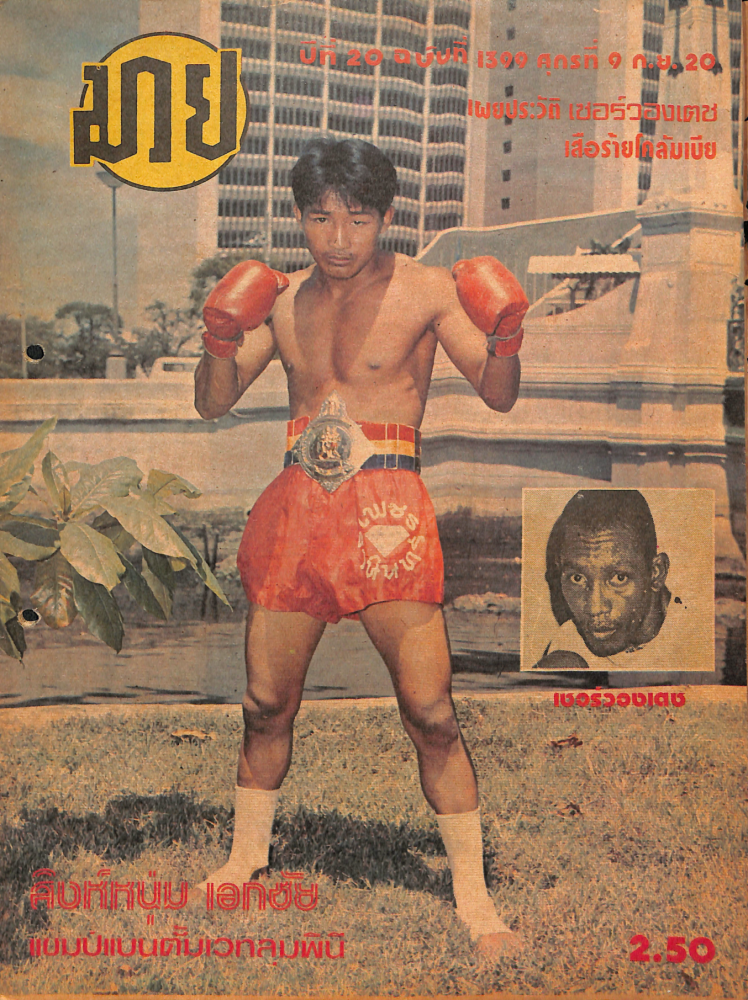
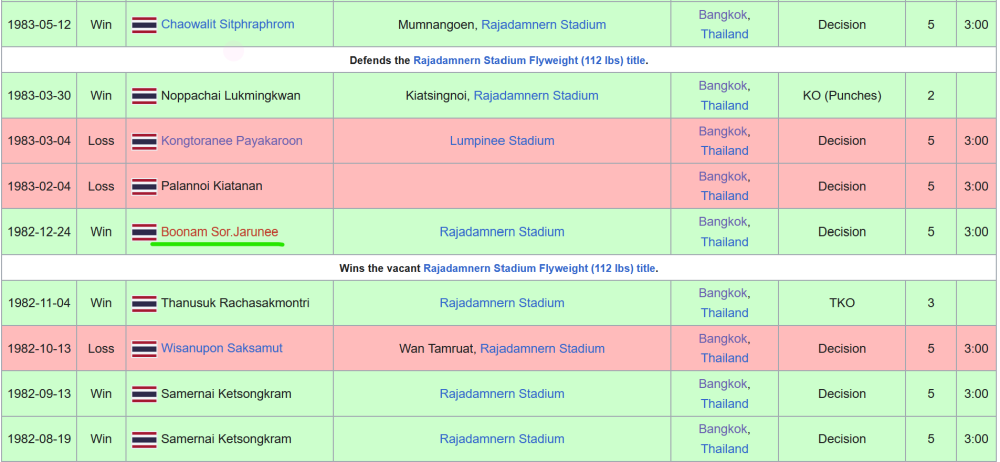
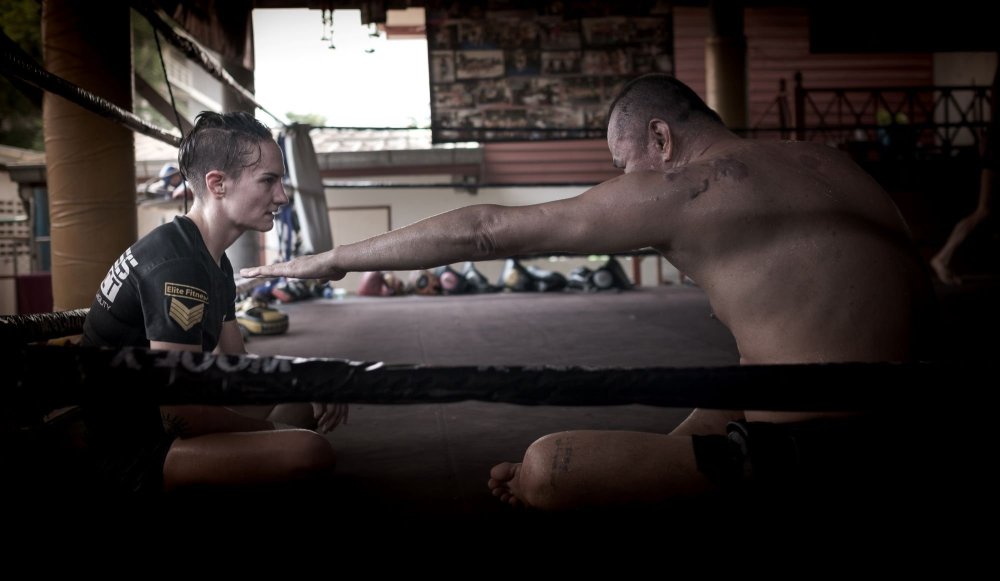
.thumb.jpg.a4c51d2fdfe94a529a911dbeec75c411.jpg)
.thumb.jpg.73ecaa510849d11bf4120944c8ad2465.jpg)